8 Essential and Unknown Facts of the Feng Shui Compass and Luo Pan.

Dr. Michael Oon
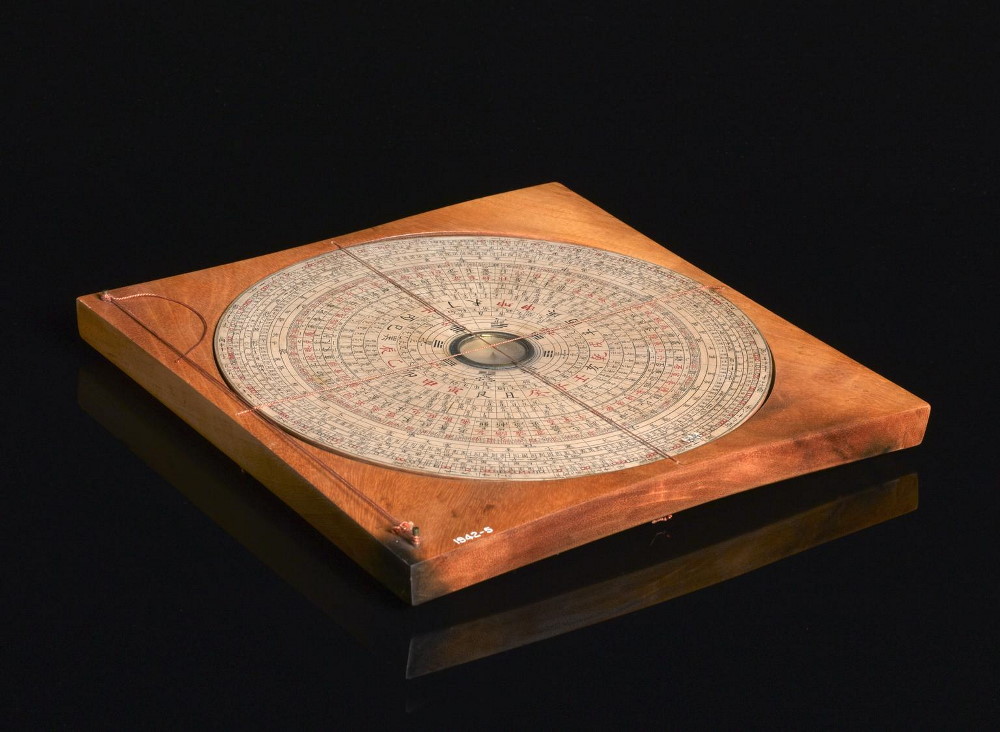
The Feng Shui Compass is more than two thousand years old.
When the Chinese "invented" the compass, it was for feng shui and not for navigation. This reflects the Chinese mindset – improving the living area for the benefit of people, not navigation of the land and the seas.
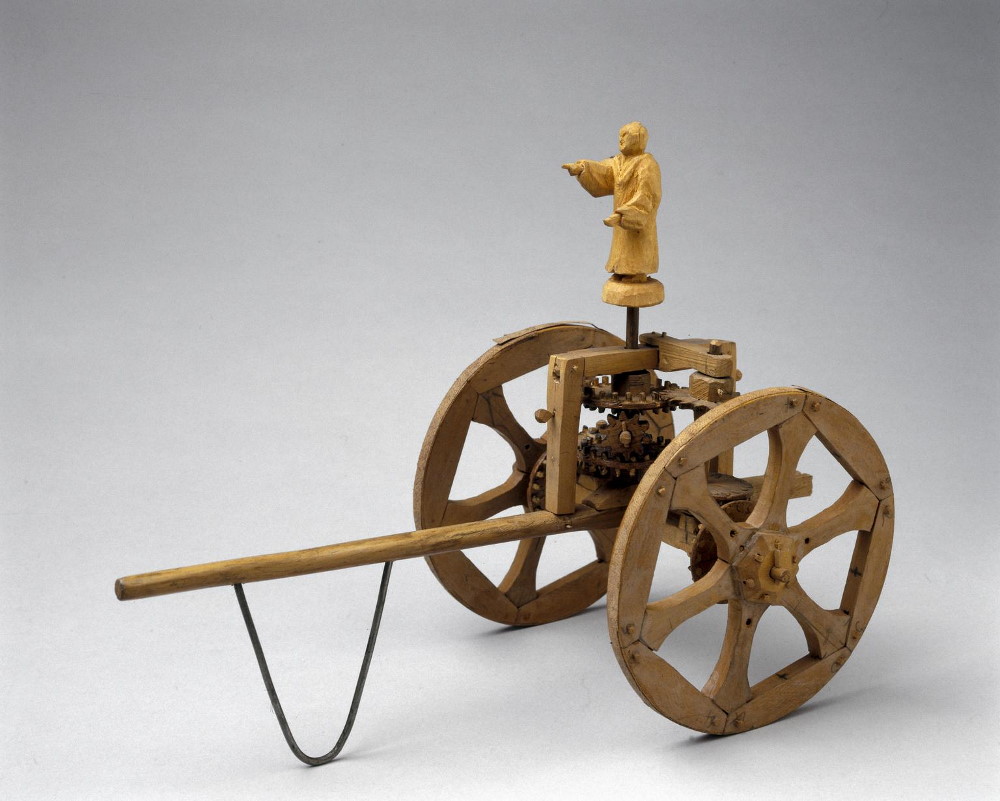
This article traces the origins of the Feng Shui Compass through to the development of the modern Feng Shui Compass and the LoPan. This device has reached its zenith in design, as it has all the functions in one unit.
Now, there is the western compass. It is small, rugged and accurate. It is used for navigation, hiking, and in demanding applications like the military.
We are now in the digital age where the ubiquitous mobile phone has apps that replicate the functions of the LoPan.
How do real professional Feng Shui consultants use this to identify the directions and interpret them?
What type of Feng Shui compass or LoPan do they use?
Do they struggle to read the small text of the LoPan?
Would the digital Feng Shui compass make life easier for the Feng Shui Consultant?
What is the purpose of the compass in Feng Shui?
Nomenclature:
Feng Shui Compass: This covers all types of compasses used in Feng Shui.
LoPan – This is specific to the Chinese Instrument consisting of the compass in the centre surrounded by a data disc.
The Purpose of the Feng Shui Compass:
In Chinese Metaphysics, energies coming from different compass directions have their properties.
The consultant must know what type of energy is involved in the property.
At the most basic level, the PaKua has eight directions. Each direction has its properties.
Then it goes to the next level, the 24 mountains of the Flying Star formula. The 24 different directions have different properties.
In the Beginning – Lodestone
Lodestones are naturally magnetised pieces of the mineral magnetite. These stones have the unique ability to attract iron. This property has been known since ancient times.
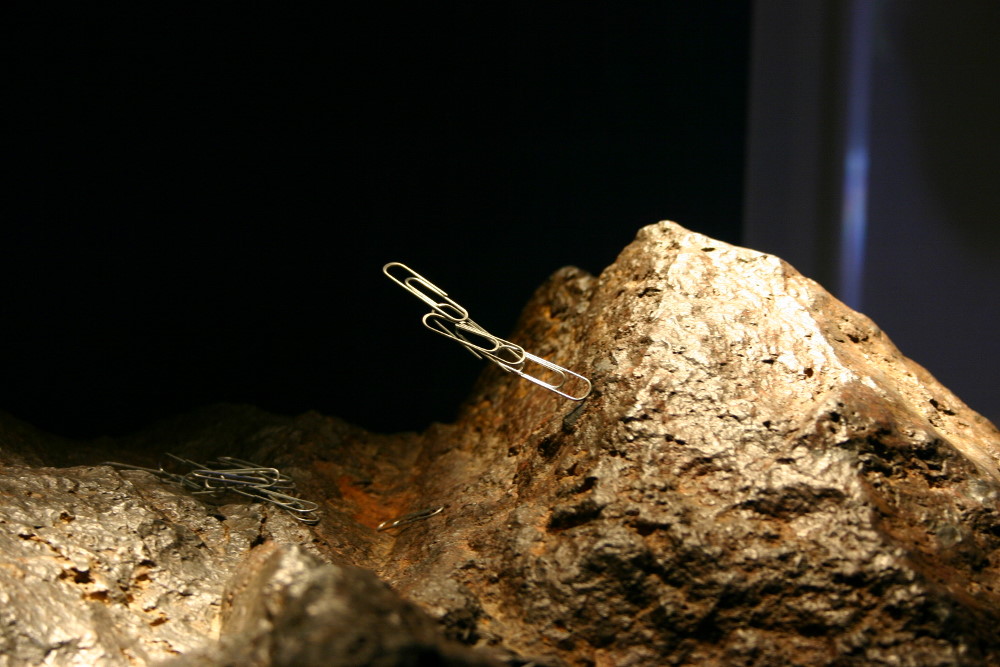
The earliest Chinese reference to magnetism is the Book of the Devil Valley Master in the 4th Century BC. and the work Lunheng (Balanced Inquiries) 20-100AD, "A lodestone attracts a needle".
The lodestone consists of 2 different oxides of iron: magnetite and maghemite as a minor component. It is a permanent magnet, as its magnetic properties do not fade with time.
Chinese Lodestone Compass
The compass was first mentioned in the Han Dynasty (206BC to 220AD).
There were two types of compasses – wet and dry.
Wet:
These two images are examples of the wet compass.
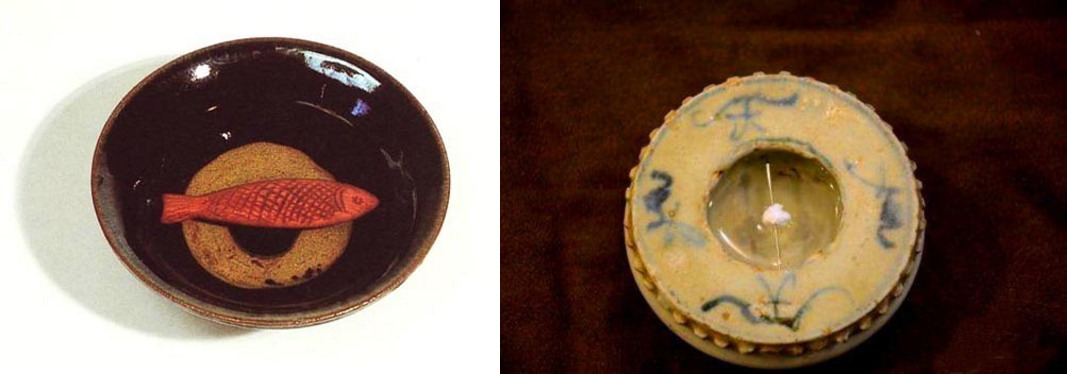
The more refined needle could be floated in water which became known as the "South Governor" or the "South Pointing Needle". The term "South Pointing Needle" (zhi nan zhen) is the Chinese term for a compass.
This "South Pointing Fish" compass can be easily made following the instructions from the Houston Museum of Natural Science.
Dry:
These were pieces of lodestone or magnetic needles suspended with a silk thread so they could turn freely. It would always point towards the magnetic poles—one end towards the North and the other to the South.
An example of a suspended lodestone.
Commentary:
In those days, the Feng Shui Master was interested in identifying the South direction. After identification, he can quickly work out the subsidiary directions of North, Northwest, West etc. These are the eight compass directions of the PaKua.
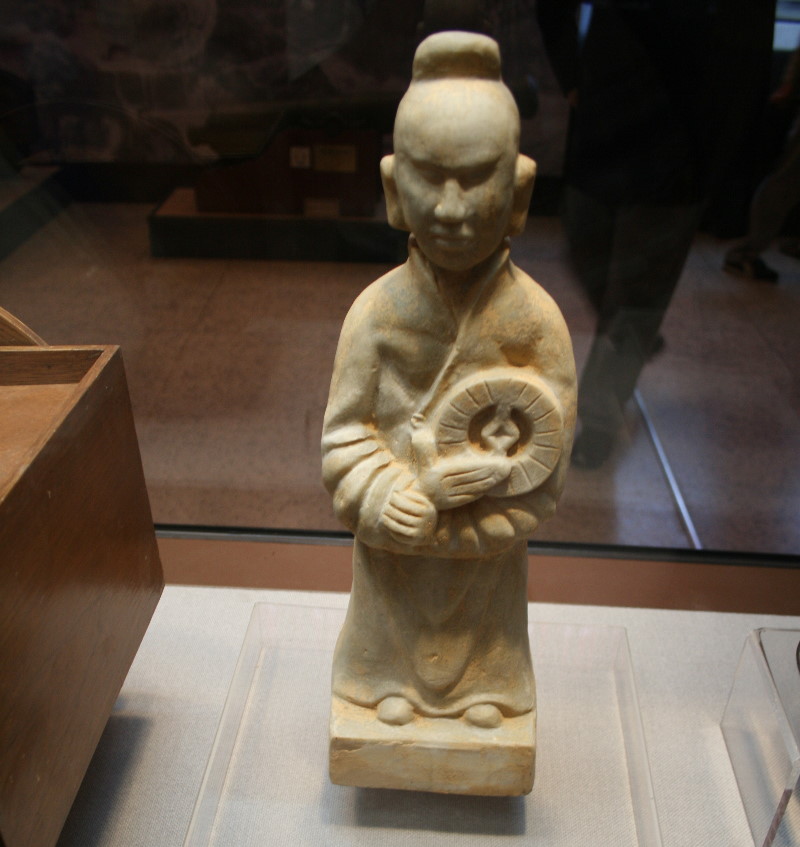
The Plate compass with Lodestone Spoon Pointer

A commonly seen image in books and on the web where the lodestone is fashioned into a shape of a soup spoon. The lodestone spoon is placed in the centre of a bronze plaque and spun. When it stops, the handle of the spoon points South. The bowl part of the spoon would point north.
The bronze plaque is inscribed with cardinal direction points, directional indicators for various constellations, and other essential symbols and information.
This compass is small and portable. It can be easily carried around.
This video gives a comparison of the different types of compasses. It also shows the plate feng shui compass in action.
Commentary:
The purpose of these compasses, whatever configuration, is to identify the South. Hence the compass is called the 'South Pointing Needle'.
A short Discovery vChannel video description of the Antique Feng Shui Compasses.
The Luo Pan
The Luo Pan, or the Chinese Feng Shui Compass first reported reference in the West in 1834.
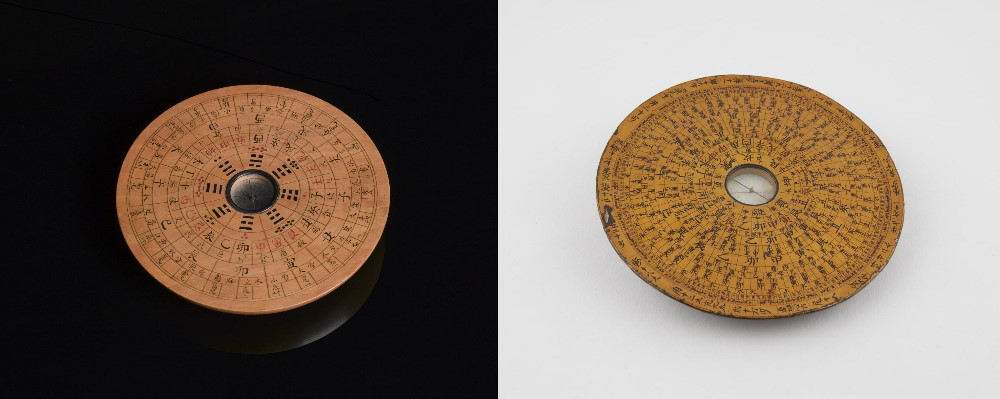
It is the result of the development of 2 aspects –
Technological: The small and portable compass.
It consists of a marked needle which always points South. In addition, this needle has a "pocket" placed over a vertical pin. The needle can swing the full 360 degrees freely. This arrangement is covered in glass, so the needle remains on the pin.
Methodological: New feng shui formulae developed:
These are formulae like Xuan Kong Feng Shui, which includes the Flying Star formula.
These formulae require greater precision in the measurement.
Previously, it was just the identification of the South direction. With these new formulae, there is the requirement to segment the 360 degrees into 24 sections or mountains. Each mountain is 15 degrees wide.
Then there are the 64 hexagrams. Each hexagram has 5.6 degrees per section. To achieve these requirements, the LuoPan is a precision instrument.
The Construction:
The compass in the centre is known as the Heavenly Pool.
The surrounding data disc is known as the Heavenly Plate. It is a "cheat sheet" or "crib sheet" of the various formulae.
Early Luo Pans were made of wood consisting of 2 components (compass and surrounding data disc) as shown in the earlier images.
The latter types of Luo Pans have a cradle to hold the data disc. The disc rotates within the cradle. A string across the Luo Pans acts as a guide in the measurement and holds the disc to the cradle.
The brass disc has the characters embossed on the metal surface. This enables the Luo Pan to be mass-produced rather than individually crafted by artisans.
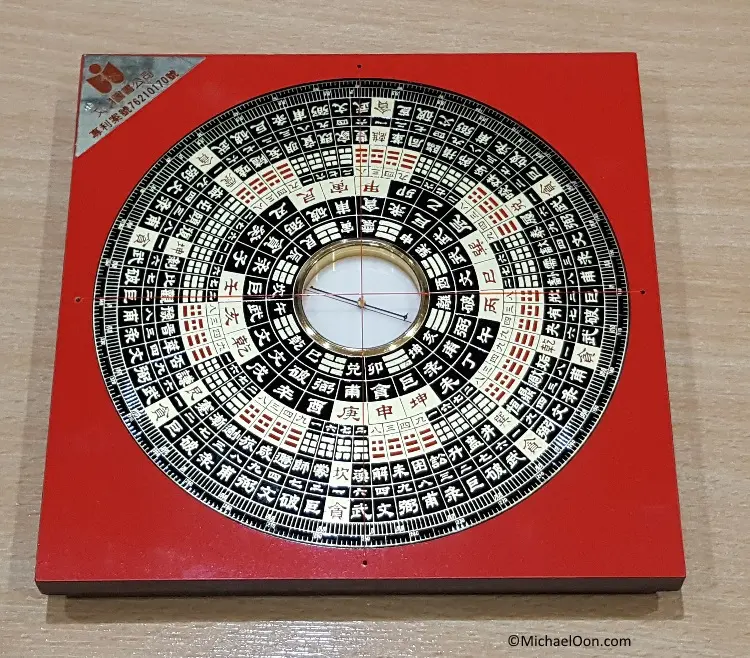
Commentary:
Benefits:
The Luo Pan is an all-in-one device. You can measure the compass direction and get the relevant data of that direction. All this just by reading the compass.
Secondly, it is impressive - especially in front of clients. The larger, the better, even if you do not know how to use it.
Difficulties with using the Luo Pan:
The needle in the compass is very jittery. It swings or moves freely with the slightest physical movement or magnetic fluctuation. This fluctuation is less severe outdoors. However, when indoors, there is interference from metal, electricity and its cables, water flow in pipes etc. Therefore, it is a skill when taking a relevant reading.
I would not recommend the widely taught method of placing the Luo Pan against the door. There are essential metal objects within the door, like the door locks and a letterbox. This interferes with the compass reading.
The text in the Luo Pan is small. The older a person gets, the more difficulty reading the small text without any optical assistance. When the person uses reading glasses, how clear is the vision of the surroundings – whether in the interior of the property or in the outside environment?
The larger the Luo Pan, the greater the number of rings and hence more information. However, larger Luo Pan comes with greater weight. If you are on a field trip carrying a large Luo Pan together with other equipment, the weight being carried wears you down.
Necessary information? Teachers in the West sell their Luo Pans that fit their course syllabus. The supplier is based in Taiwan.
There have been attempts to have a Luo Pan with English characters. It does not work. A single Chinese character has a particular meaning that occupies less space than an English word which is at least four characters long – for example, West or East. It is not elegant, and the mystic of the Luo Pan is lost.
This is a video of the making of a Luo Pan. A story of Wu Zhaoguang, a young man in his thirties who took over Luo Pan Wu Luheng, the compass shop of his father, who died in 2014 in Wan'an. The video has English subtitles.
Western Compass
The Silva compass, which has a backplate, is a refined product. It is commonly used in Europe and the Americas for hiking and rugged uses like the military. It is small, accurate and robust.
The needle is much larger and has a stronger magnet than the typical Luo Pan.
The movement of the needle is damped. This results in a stable and smooth movement.
The markings at the edge of the dial are large and easy to read.
All this makes for a better user experience than a normal Luo Pan.
There are some consultants who have these compasses, which are marked for eight palaces and 24 mountains. It is minimal and easy to carry. It can easily slip into the back pocket.
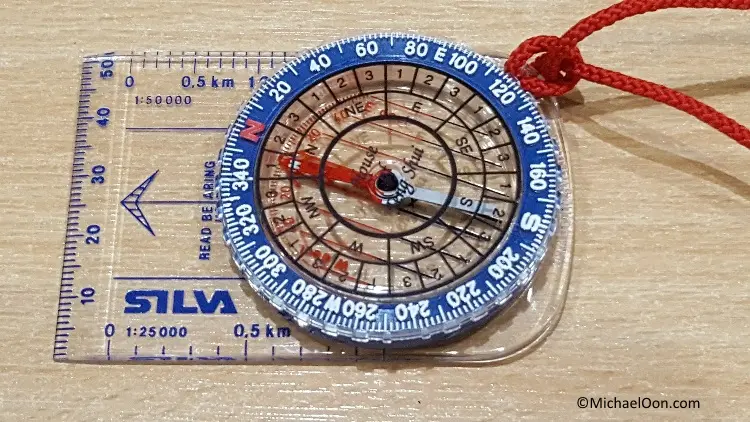
Is it simple and easy to take feng shui measurements? Try a western compass with a "Feng Shui Compass Reference Card" or "cheat sheet". You take a reading from the compass and then refer to the Reference Card to interpret the compass direction. It is as simple as that. There are quite a few "Feng Shui Compass Reference Cards" available online.
This video is a helpful guide on using a western compass with a baseplate.
Digital Feng Shui Compass
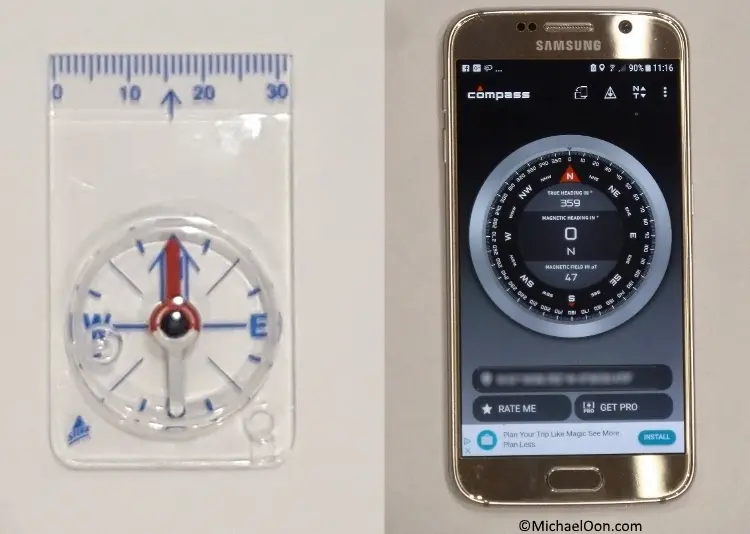
There are feng shui compass apps on both Apple and Android smartphones. There are reviews for each app.
The limiting factor in using digital devices is the accuracy of the reading. This depends on the calibration process.
The number of apps available appears to fluctuate. Therefore, I will leave the reader to do the research if interested.
The battery life of a digital device is finite, and it can go flat at critical times.
I have tried these apps as well as a professional-grade digital compass. I have found them quite inconvenient as the calibration would drift. When I think about it, a digital compass or app on the smartphone is overkill for the purpose.
What could be as simple as a compass with only one moving magnet? There are considerably fewer things to go wrong.
Secondly, a considerable price differential between a digital device and a compass.
When I am working, I want reliability and simplicity. I want to develop trust with the tools that I use. I need the device to work every time with no fuss. Making an error in the compass direction can drastically affect the interpretation. It will affect my credibility as a feng shui consultant.
Human Feng Shui compass
I only believed it when I saw it. A senior consultant with more than four decades of experience would stand in the open environment. With his eyes closed and he could accurately point in the North direction repeatedly with precision. Of course, his measurements were checked.
As part of my training, I walked the streets in the surrounding areas looking at properties for more than two years. I started to feel the space and time of the environment. After seeing a senior consultant doing it, I tried it. I could detect the South Direction repeated. The author, Edward Huth has shown that humans can identify the cardinal compass directions in his book - The Lost Art of Finding Our Way.
It is about understanding your inner self and how you react to the environment. The more I understood my feelings, the easier it was to identify the South Direction. Secondly, I realised that I could tell the time without looking at my watch.
Secondly, having worked with the same methods and compass directions for more than 20 years, I got to know the interpretations of the various directions. Therefore, I only use the cheat sheet when necessary.
Commentary:
I have found that when I relax and let my inner self take over, I can easily identify the direction and tell the time. It is at ease with the environment.
In my opinion, humans can develop this skill of identifying the compass direction and time with repeated practice. It is just like learning another skill.
Antique Feng Shui compass with a Sundial
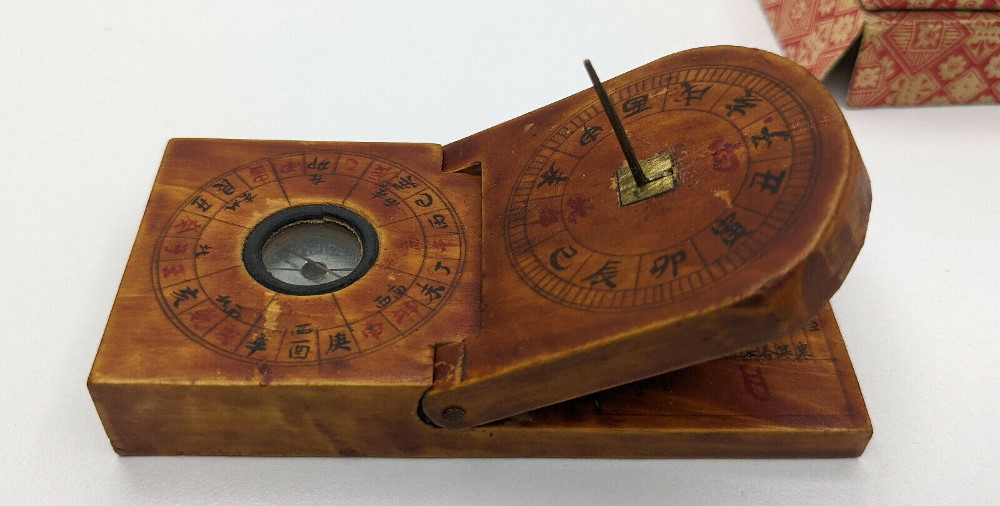
Why do these antique Feng Shui compasses have an attached SunDial?
The above compass is from the 18th Century.
Sundial:
A sundial is a device that indicates time by using a light spot or shadow cast by the position of the sun on a reference scale
The sundial in China goes back to the Shang Dynasty (1500 – 1000 BC). It was one of the ways to tell the time other than clepsydras, a water clock and an incense clock. Of course, this was before mechanical timepieces like clocks or watches.
The apparent limitation of the sundial is the requirement for sunlight. Therefore, it does not work on cloudy days.
The question is – why is there a sundial which measures time on a compass with measures compass direction?
Feng shui is about time and space dimensions. Compass direction involves the space dimension, but why the time dimension?
I understand that the sundial was for the consultant to get the actual time so that the consultant can provide an auspicious time to start the recommendations.
The Inclination is adjusted using a hinged strut with thirteen notches. It is said to correspond to thirteen solar periods of the year.
Are there two North Poles? (Compass Declination)
So, why are there two types of North, and does it matter in Feng Shui?
True North is the geographic North, the meeting point of the meridians of longitude. It is an artificial point determined by Geographic institutions.
Magnetic North is the point on the earth's surface where the planet's magnetic field points vertically downward.
These are two different points in the Arctic.
Why should it matter?
This relates to the declination of the magnetic field. The declination is the difference between True North and Magnetic North.
This declination angle of less than 2 degrees in the UK is slight. However, it is more significant in the Americas, with California at about 15 degrees and Brazil at about 20 degrees.
The discrepancy of 15 to 20 degrees is large. The width of a mountain in Flying star is 15 degrees. Therefore, that could be as large as one "mountain" on the 24 mountains of the flying star formula.
Which North does a Feng Shui consultant use?
Feng Shui deals with energy which has electromagnetic properties. Therefore, the compass direction relates to magnetic North and not true North or Polar North.
Overview
The compass was invented by the Chinese for Feng Shui more than two thousand years ago. Navigation on land and sea was the secondary development.
The Luo Pan is an elegant all-in-one device. It has a pointing device (compass) in the centre with a data disc surrounding the compass. All this is encased in a cradle which allows the disc to rotate freely. It is elegant, compact and has its beauty.
The western compass has developed into a simple, small and rugged device. The central mechanism is read easily with accuracy as it has significant markings at the edge of the dial. The needle is stable as the mechanism is damped. It is small and conveniently portable for fieldwork.
Do not store your compass or Luo Pan next to your mobile phone. The electromagnetic fields emanating from the phone can negate the properties of the magnet.
Digital compass using the latest technology. It can show all the relevant data at a press of a key. But is it as convenient and reliable as a simple compass?
Smartphone Feng Shui compass apps: Be on your guard when using a smartphone to determine the North. The results it gives are of True North. Feng Shui used Magnetic North rather than True North.
Human Feng Shui Compass. This is the ultimate way to determine the direction and also get characteristics of the direction without any instrumentation. Like all human skills, it can be achieved with practice and determination.
Feng Shui is about managing the energy in the property. It is about utilising the properties of the energy from the compass direction for the client's benefit.
Other Posts that might be of Interest:

